Encephalartos manikensis is one of the giant Encephalartos species from southern africa - in this case, Zimbabwe (where it is presumably getting rarer and rarer as conditions worsen and more and more specimens get poached or eaten) and Mozambique. It is the head of the what is known as the "E. manikensis complex", a group of cycad forms in this region, which includes E. manikensis itself, closely related species like E. pterogonus and chimanimaniensis as well as a number of forms currently attributed to E. manikensis but which may represent separate taxa such as E. manikensis "bandula" sometimes known as E. bandula.
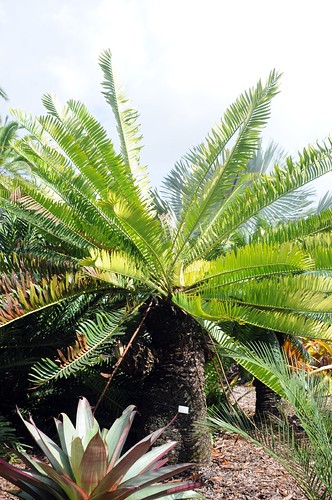
Plants in this complex tend to have fat trunks up to 5 feet and entire leaflets. The specimen below for example has a bulky, almost triangular, trunk.
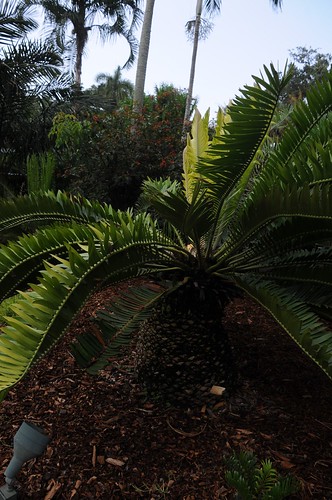
Plants with such heavy trunks are more than capable of becoming multiheaded where damage occurs to the main stem. On the manikensis below you can see a second head pushing a flush of leaves out of a fairly sizeable secondary caudex about 5 feet up the main stem. To the right you can see some scarring which may have been what triggered the development of the pup. This is a plant living in hurricane country which may go some way to explaining this.

The manikensis complex tend to be rather dour, if regal, cycads. Sure they tend towards a stately bulk and stature but they also tend toward rather bland green leaves and cones and relatively uninteresting leaflet structure. That said this one is putting on quite the display.
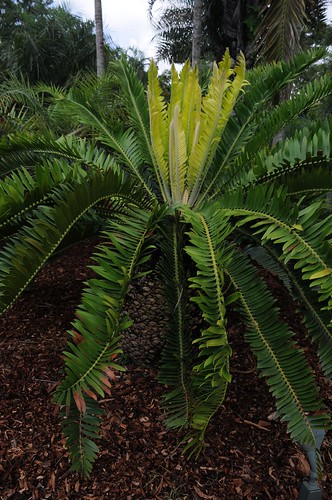
A rather spectacular golden flush.......these new leaves will green as they harden although rarely cycads do push flushes of brighter yellower leaves of no apparent reason.
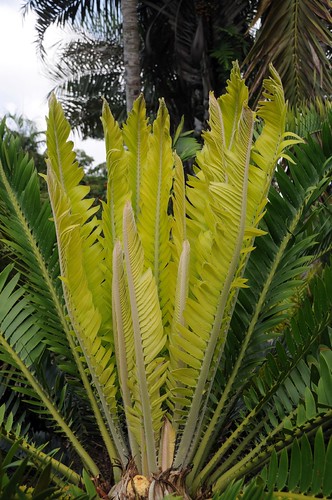
and as if that weren't enough the first signs of an imature cone pushing out. I assume from the scale this will be female but could be wrong.
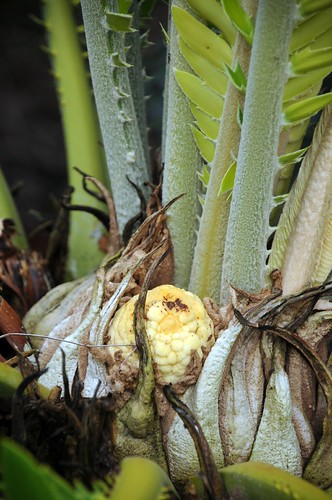
As I said previously this group tends toward green cones, and whilst this one is a nice lemon yellow now I'm guessing it will mature to a greener shade with exposure to the light in the same way as the leaves will. Manikensis incidentally refers to Manica in what is now Zimbabwe, its place of discovery.
1 comment:
Dour or not, I'd be happy to harbor such a plant, if it could only stay alive in this climate! Sigh...
Thanks for sharing your cycads with a plant lover who's apparently misplaced.
Post a Comment